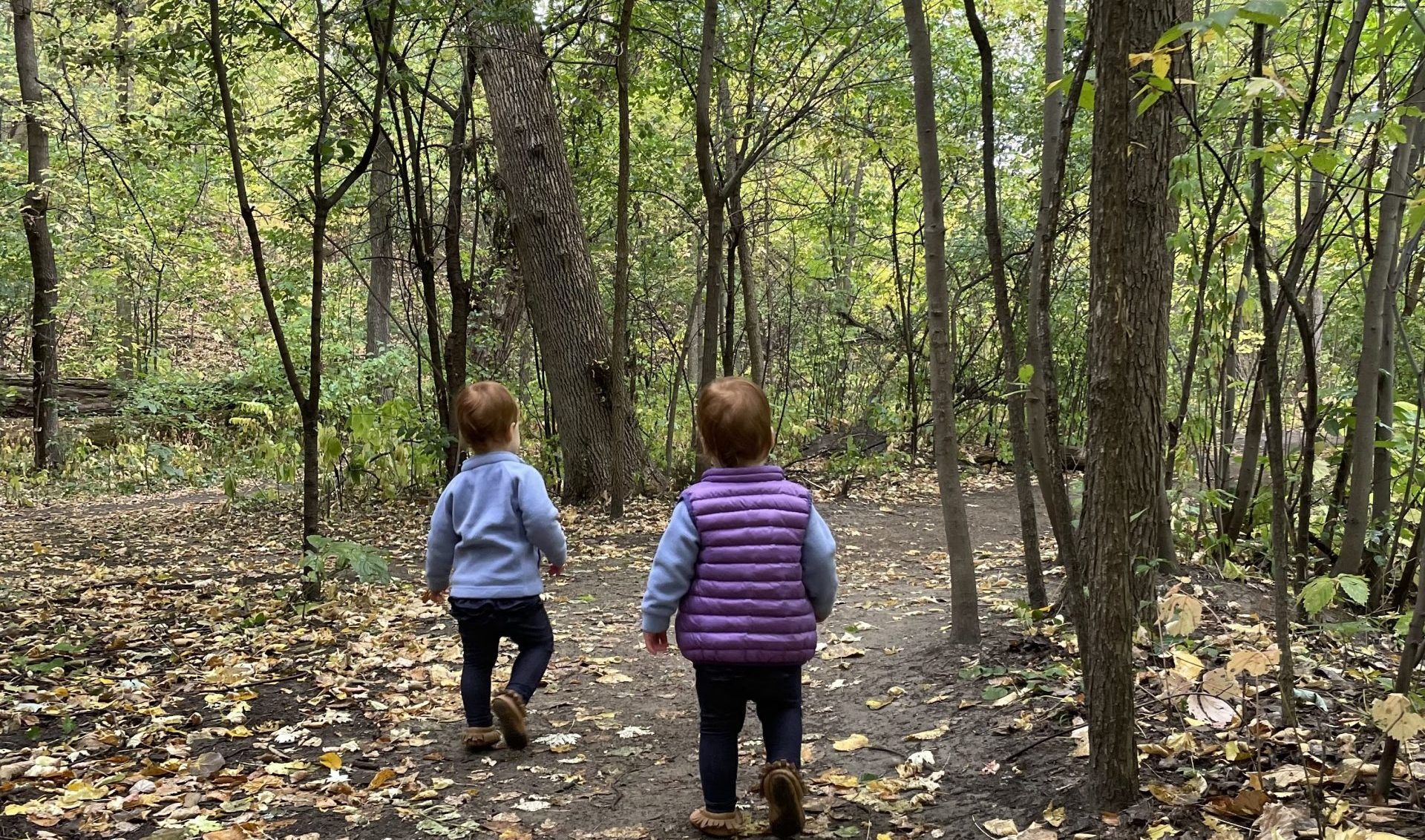What does this mean for parents and caregivers of infants?
I’ll begin with the caveat that I don’t know that this is a direct quotation from Magda Gerber. Like many brilliant historical figures, we sometimes attribute meaningful quotations to people we honor and admire, even if they didn’t say them. However, I will say that it is a very apt description, indeed, of her Educaring® Approach. This statement begs the question: how do you wish to proceed in your relationships with children? I feel like this question is asking me to take the long view…a lifetime: What is my vision for children over the course of their lifetimes? What is yours? Take a moment now and think about it.
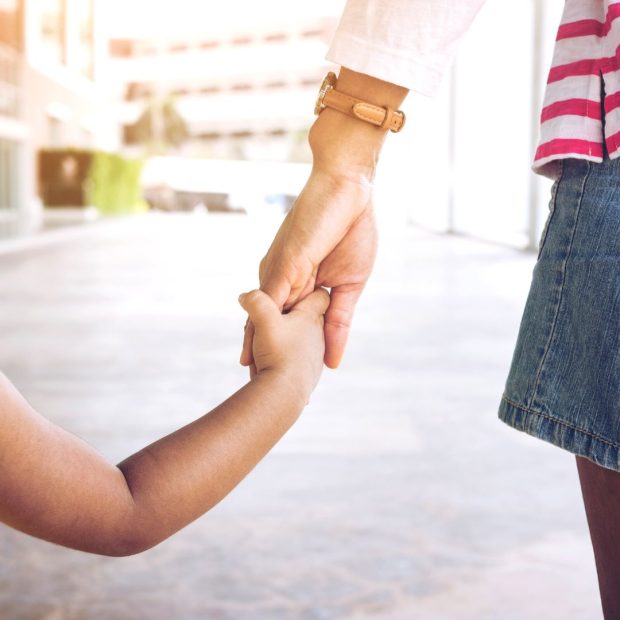
My vision is to be in relationship with children and for them to grow into content and successful adults. I want to know who they are, and I want for them to know who THEY are.
It’s a simple wish, but not an easy one.
And yet, I’ve seen this vision unfold time and again. I’m fortunate enough to have been introduced to Magda’s work almost 20 years ago. I know teenagers and young adults who have grown up in families who practiced the Educaring Approach, and there is just something truly special about those individuals…they are teenagers you don’t mind being around!* There is a peace to them…poise, a solid presence….what they have is self-confidence. And I see that in every age and stage: teens, tweens, young school-aged children, preschoolers, and yes, infants and toddlers. Magda had it right: Your Self-Confident Baby, indeed!
*Parents of said teenagers always remind me that their brilliantly authentic teenagers can be just as authentically awful when in the privacy of their own homes…but hey, so can I! I mean, you have to let it all out someplace!
So, instilling that sense of self-confidence is how I wish to proceed. How do I begin?
By giving them the time and space to find it… In fact, not so much instilling self-confidence, as preserving it.
Magda asked us to start with the idea that infants arrive with individual and unique personalities and capabilities. Her Educaring Approach asks us to slow down and observe children…to look for that personality, those capacities…to invite them to participate whenever we engage with them…basically, to start in relationship with them.
The Educaring Approach starts with respect. That idea is so integral to the Approach that I remember, when I was first learning about RIE®, I thought surely it must stand for “Respect Infants Everywhere!”
At first blush, it may seem a strange verb to apply to infants. However, whenever I ask people to think about a respectful interaction they’ve had, universal themes always emerge: to be seen, to be heard, to have one’s point of view taken into consideration, to be trusted, to be spoken to in a meaningful way. It’s something we all want. As part of a mindfulness class I recently took, I heard that theme emerge again from no less than Oprah: All of us just want to be really seen…that I see you and I know that your being here matters. The human condition is that we all need to be heard. To be seen. To have our perspective acknowledged.
So, if we begin as we wish to proceed, we begin by seeing them and listening to them as infants.
(And I want to emphasize here, that it is never too late to start using the Educaring Approach. It is never too late to respect someone’s point of view and involve them!!)
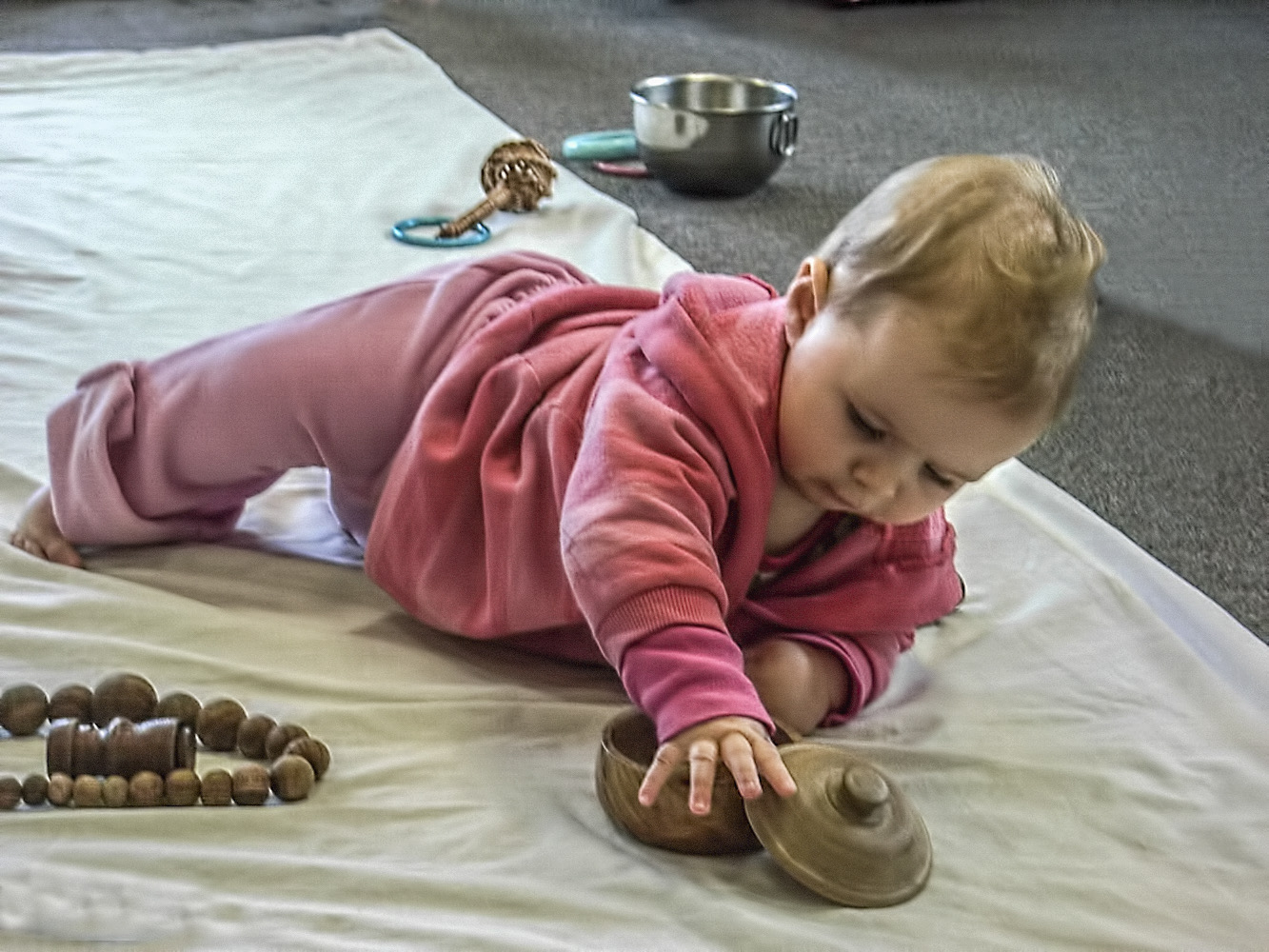
The Educaring Approach helps us see that each child is unique, has a point of view, and is capable…it is our job to look for that point of view and to look for the abilities and to offer opportunities for them to demonstrate their capabilities and ever-growing competencies. Respecting infants opens a whole new world to us: rather than helpless, dependent creatures that need to be entertained, motivated, stimulated….we see curious, eager, thoughtful people…yes, people who depend on us for so much…but who also have startling capabilities when we take the time to look for them.
And that’s what we do in Parent-Infant Guidance™ classes each week…we practice observing them. And it is such a gift. Parents and caregivers watch as children encounter frustrations and solve problems, how they make connections, how they exist in a state of flow, moving from one object to the next, needing no guidance or direction…simply following their own interests. They are really in the process of what early childhood theorist Friedrich Froebel called “the language of things.”
To adults, this could seem boring. We already know what a metal ramekin feels like in our mouths, what items will fit inside of a 5 gallon water jug with a narrow mouth, that balls roll when you throw them and sometimes mason jar lids do, too, but stuffed kitties rarely do…we already are well-familiar with the way the light plays with objects to make shadows and that that beam of light moving across the ceiling is from a truck rumbling by. It’s tempting to want to jump in and teach or entertain, to show them that the balls can roll down the slide, that you can pop those funny egg shaped things together….but when you do that, you might miss them figuring out the kitty is just heavy enough to slide down that slide, and that moment of discovery when they figure out they can put those beads on every finger. Magda was fond of quoting Jean Piaget: “When you teach a child something, you forever take away his opportunity to learn it for himself.”
It’s tempting to help them with things that are easy for us…sure, you can open that jar with the toy inside or pull that big ball out from where it is wedged under the structure, but so can they…if they persevere a little. Frustration challenges us in big and small ways throughout life…sometimes even leading to leaps and growth, and sometimes just annoying us to tears… learning to mitigate frustration early in life is a gift. When you jump in to solve the problem every time, what you end up teaching is not how to open the jar or how to play with pop beads or balls…but instead you teach them to look outside of themselves when they encounter a frustration or problem. That they need someone else to entertain them or tell them what to do next. This is absolutely not to say they will never look to you for help or for guidance!! No not at all! But instead, to have that self-confidence to look within themselves first, is the goal.
Of course, this is not to say we should never teach children! There is absolutely time for teaching, but before you teach…slow down…pause…and see what they already know, what they can already do…and what they are teaching us…there’s beauty in the simplest things if we slow down and see with their eyes. For example, during lunch with a toddler, I recently discovered how spectacular garbanzo beans are…their funny little shape, with a crack down one side, and a tiny little point that you can just grasp with your fingernails…there’s a papery skin that pulls away, and they don’t squish, but rather crumble!
One of the things I love best to watch is how children learn to be with other children. That learning starts in earnest during those first moments when two infants can get close enough to touch, they want to explore each other’s faces and hands…and sometimes toes. While we have to keep them safe (those eyes are just SO tempting and the grasp is not quite refined…), also want to refrain from interfering too much…this is the first foray into the social world…their relationships with their peers.
Bring that careful observation and hesitation to interfere with you as they get a little older and start to pass toys back and forth and you’ll notice that for quite a while no one minds having a toy taken away, and in fact, it sometimes sparks a connection! Even when children do start to mind having a toy taken away, keeping children safe is still the only priority…this is when it is most critical to hold back with refereeing…this is when relationships are really developed. For infants and toddlers, learning how to be social, to be a part of this world, is all they are working on…not whether or not they get to hold onto the truck for a few more minutes. With our careful observation and reflection, we can let children learn to negotiate these moments on their own. When we refrain from solving squabbles over toys, we are giving children the tools to move through the social world confidently…knowing they can work things out with others, knowing you are there to support them, but also without having to go to you to solve it for them.
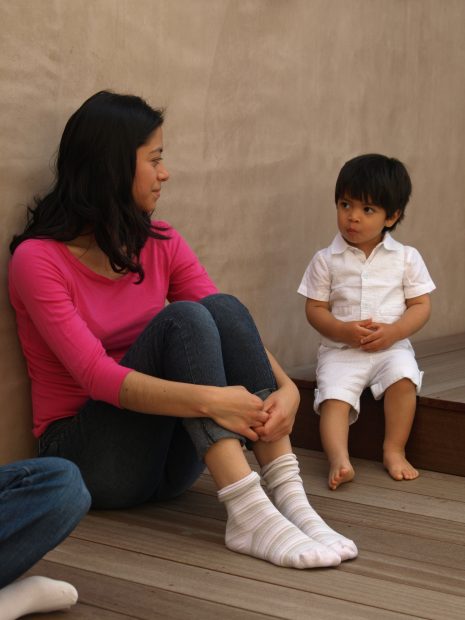
In all of the scenarios above, I put the spotlight on what children can do, on their amazing capabilities and capacity for growth and self-knowledge. It’s true that infants and toddlers are capable of so much if we allow them to try, if we give them the time, space, and opportunity…but there’s one more, critical element to this equation: attachment. None of that is possible outside the context of a caring and present relationship.
At the beginning of this discussion, I talked about slowing down, observing…and allowing them to participate whenever we engage them…and that’s the key. When do we most often engage with children? Over caregiving routines! Changing diapers and wiping noses and feeding and dressing and applying sunscreen and changing diapers and wiping sticky fingers and bathing and brushing hair and clipping fingernails, and did I mention changing diapers? Well, the amazing thing about all of those caregiving routines is that they are in fact “care-building” activities.
Attachment is formed when you have a need and that need is met, or at least responded to in a contingent way…and all caregiving is, is meeting needs over and over again! Filling an empty stomach, taking away an uncomfortable lumpy diaper and replacing it with a fresh one, getting the stickiness off your fingers (we will be friends forever if you help me get stickiness off my fingers!)….whenever you meet a child’s need, you are filling them up, showing them that you can be trusted…and when you meet those ways in a respectful way (slowing down so you really see them, taking their point of view into consideration, speaking to them in a meaningful way, and yes, trusting them to be a partner in the exchange, not merely a passive recipient), attachment becomes that much stronger.
I’m well-aware that caregiving routines are not always as copacetic as outlined above…that there are diaper changes that feel more like wrestling matches, more than a few Cheerios getting tossed deliberately onto the floor, and some distinctly Houdini-like moves that can be involved in getting a child into a carseat. But I said “respect the child,” so that means that’s okay? Skip the diaper, let them toss food all over the place, wait for them to decide when they want to get in the carseat? Not at all! Part of respecting someone is setting healthy limits and boundaries, and caregiving moments (and yes, other moments in life, too!) give you the opportunity to set those limits. This is where the “meeting the need contingently” comes into play…you slow down, acknowledge their point of view, then set the limit.
This can be one of the hardest things to do for infants and toddlers: setting limits can feel punitive, or like we are not listening to the child’s needs and desires. But it is one of the most important things we can do for them. We all function better in life when we know where the limits are and operate within them (think about speed limits…it’s dangerous when people drive well over or even well under that limit) and children are the same. They need to know there are limits and that they are solid and consistent. Once that is established, they can relax and explore within the confines of those limits.
Which is not at all to say that setting limits is peaceful: children will and should test limits, and that testing may involve big emotions, especially as children get older. That’s okay! Going back to my initial statement…my vision for children… to grow into content adults, allowing children to express big, loud, upset emotions is part of it!
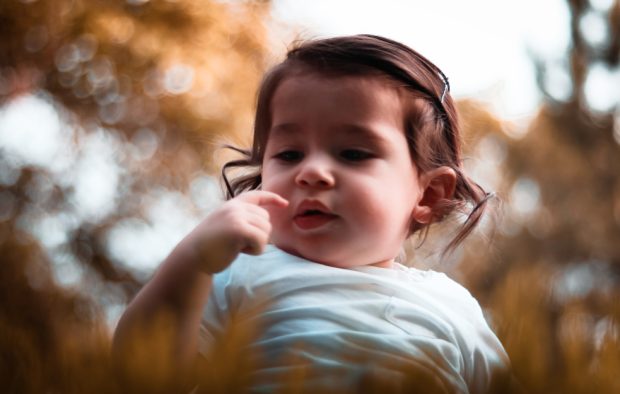
It helps me when I remember that life is full of both joyful, ecstatic happiness…and sadness, grief, anger, and despair. Those darker emotions are hard to handle. I certainly don’t like feeling that way, and I really don’t like it when anyone I care about feels that way, but I also know that those feelings are normal, they aren’t bad or scary, and they will end. And what makes it easier is having someone with me who knows that, too, who doesn’t try to rush me through it, belittle or dismiss it, but who is present to me and to it, offering me comfort if I need it, as I calm down.
My life was transformed when I learned of Magda Gerber’s wisdom and work, and I hope to help transform the lives of the families I encounter, but I think Magda always says it best and I want to give her (almost) the last word here. From her iconic film, Seeing Infants with New Eyes: “You know, having a little bit more respectful world…where people allow each other to be what they are, where we don’t need to manipulate, where we can have more trust. We can trust ourselves and each other, where we don’t need to always perform. And that’s one of the sad things, we all know it’s not always easy to always play a role. And yet, we want even our infants to play roles, to perform according to somebody’s script or schedule. So it may be a more comfortable life we could create.” A more comfortable life…an admirable way to proceed, is it not? Shall we begin?
Melani Ladygo is a RIE Associate who lives and works in the San Fernando Valley.
Originally appeared in the FORM newsletter
